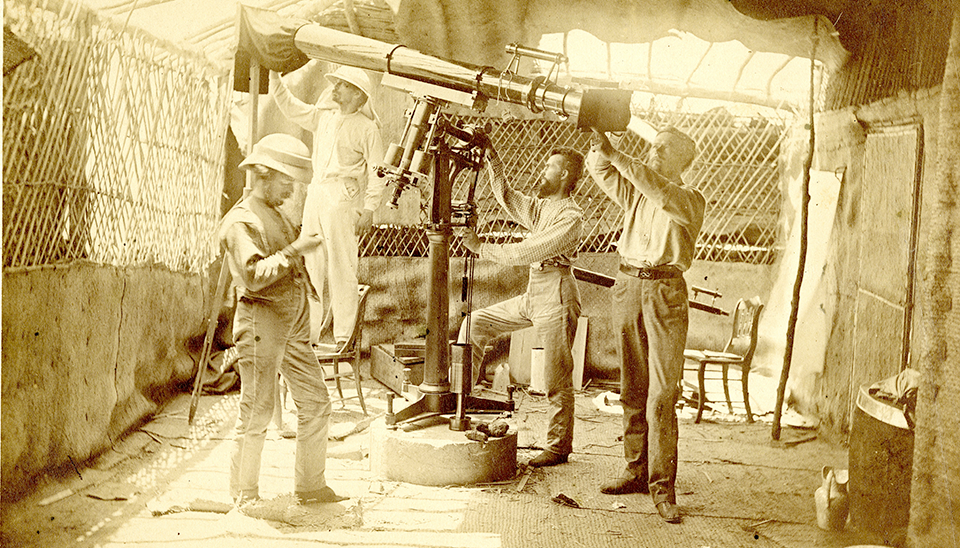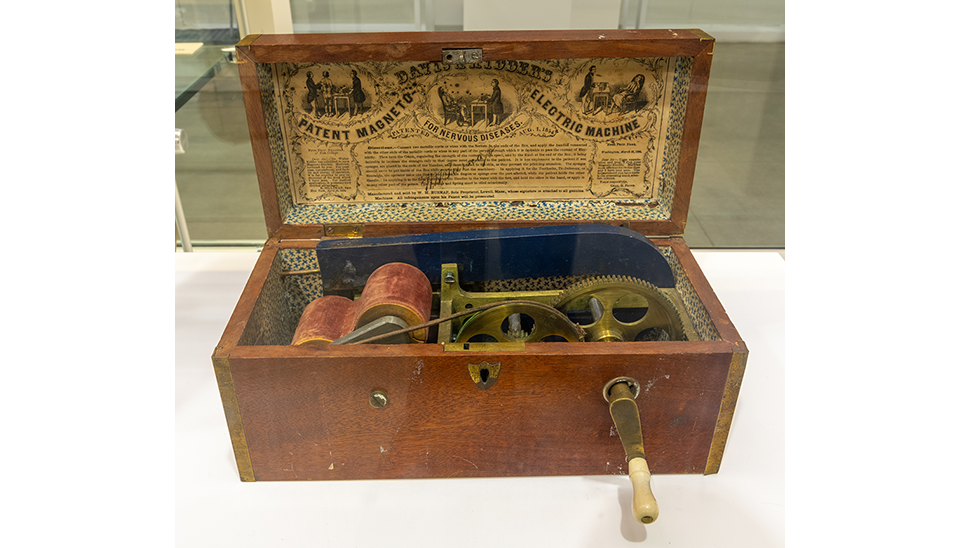The famous American naval hero Capt. John Paul Jones (1747-1792), now interred in Annapolis, Maryland, was not always buried there. Jones is a legendary figure in Revolutionary War history for his sea battles during the American Revolution. Jones is often referred to as the "Father of the American Navy," despite others also laying claim to this title, including Commodore John Barry and John Adams. Jones died in 1792, penniless in Paris, despite his legendary naval career in America and Russia. Gouverneur Morris (1752-1816), founding father and American minister to France, was with Jones when he died. While Morris was willing to provide the funds for a minimal service, the French National Assembly arranged for a more elaborate funeral. Despite the service, Jones was buried in an unmarked grave. This grave went unnoticed for over 100 years until Gen. Horace Porter intervened.
Porter (1837-1921), a Civil War veteran, was appointed as ambassador to France by President William McKinley (1843-1901) in 1897, assuming his duties two years later. Soon after his nomination, Porter expressed his concern that an American naval hero was buried in an unmarked grave in France and made it his personal mission to find Jones' remains.
Due to the condition of burial records in late 19th century Paris, locating the gravesite proved difficult and the project would last six years. Porter and his team scoured Parisian archives and government buildings to find anything he could about Jones' burial. By process of elimination, he deduced that Jones was buried in the Cemetery of St. Louis which contained the graves of Protestant foreigners, including a mass grave of the Swiss Guards who died defending King Louis XVI. It had been closed only weeks after Jones' burial and had been used as a garden and animal graveyard, further complicating the search for Jones' remains. Based on historical records, Porter knew that Jones was buried in a coffin sheathed with lead and had not been moved during the past century.
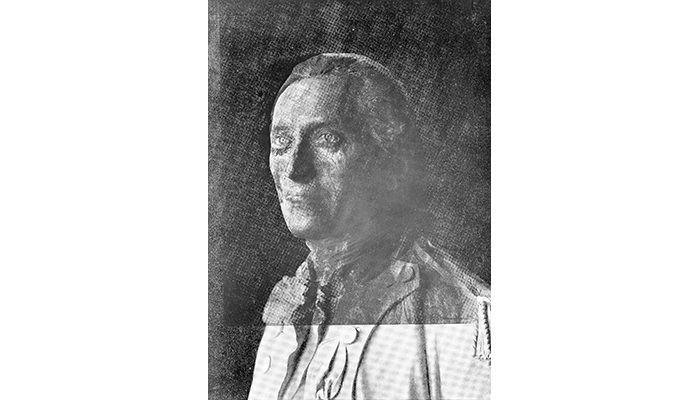
This is a composite picture showing the match between a bust of Capt. John Paul Jones and his remains. This was one of the many methods the investigative team used to verify that the body they found was indeed Jones. (Image courtesy of Naval History and Heritage Command)
Porter worked with local officials to receive permission to locate Jones' body at the Cemetery of St. Louis, with excavations beginning on Feb. 3, 1905. A total of five lead coffins were identified; some were labeled with other names, eliminating them from consideration. One coffin matched the description from Jones' burial records.
The coffin was then transferred from the cemetery to the Paris School of Medicine (École de Médecine) for definitive identification by pathologist Dr. Andre-Victor Cornil (1837-1908), anthropologist Georges Papillault (1868-1934), and anthropologist Louis Capitan (1854-1929). The team opened the casket on April 9 and were amazed to find a relatively well-preserved corpse—lead coffins have been found to help preserve bodies by poisoning the microflora and slowing decomposition and prevents animals and bugs from reaching the remains—whose appearance led them to believe they had found Jones.
The body had been wrapped in a linen winding sheet and then placed in a sealed casket packed with straw and filled with alcohol as a preservative. Papillault unwrapped the body and took precise measurements of the body which were compared with measurements taken by sculptor Jean-Antonie Houdon (1747-1792) who created a bust of Jones in 1781. Photographer Fernad Monpillard (1865-1937) took pictures of the body and superimposed negatives onto head and the bust for comparison. Through these efforts, Papillault concluded the body to be Jones.
Capitan performed the autopsy on April 13 making the incision from the back so as not to alter the appearance of the corpse. He discovered that the internal organs were remarkably intact with the lungs showing evidence of broncho-pneumonia. Cornil further examined histological sections of the heart, lung, liver, kidneys, and spleen under a microscope. He was unable to find any evidence of tuberculosis confirming Capitan's observation that Jones suffered from pneumonia and his examination of the kidneys showed evidence of kidney trauma described as 'chronic interstitial nephritis.'
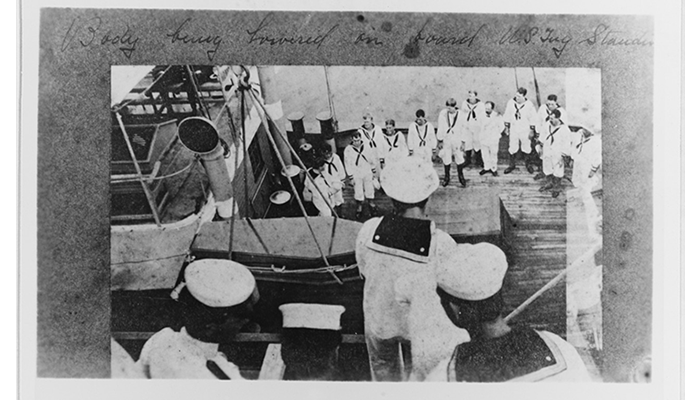
This casket containing the body of Capt. John Paul Jones is lowered into the afterdeck of the Tug Standish during its transfer from the armored cruiser USS Brooklyn (CA-3) in Annapolis Roads at the U.S. Naval Academy on July 23, 1905. (Image courtesy of Naval History and Heritage Command)
Jones' remains were returned to the original casket filled with a preservative treated sawdust which was enclosed in a new hermetically sealed, or airtight, container. The remains and the casket were then shipped to the United States. In a ceremony presided over by President Theodore Roosevelt (1858-1919), Jones was laid to rest in a crypt under the chapel at the United States Naval Academy in 1906.
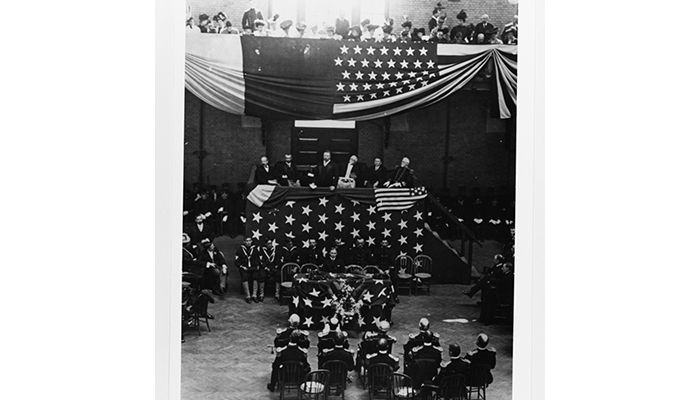
President Theodore Roosevelt addresses a Navy gathering, probably at the repatriation ceremonies for Capt. John Paul Jones at Annapolis, Maryland, circa 1906. (Image courtesy of Naval History and Heritage Command)
The autopsy kit believed to have been used for the autopsy of Jones is on display at the National Museum of Health and Medicine. It was manufactured by the French surgical instrument manufacturer Charrierre Fils and includes 11 instruments: an autopsy saw, post-mortem hammer and chisel to cut through bone, scalpels and scissor to cut through soft tissue, and dissecting forceps to remove tissue. This autopsy kit is standard, even being similar to kits used in the 21st century. However, modern kits are more likely to contain more scalpels and knives in various sizes, along with sutures, probes, and drainage tools.

Autopsy kit used to perform the 1905 postmortem examination that positively identified Revolutionary War Naval hero Capt. John Paul Jones on display at the National Museum of Health and Medicine in Silver Spring, Maryland. (230710-D-TY520-0002)
Visit the museum today to view the autopsy kit.
Resources
Bogle, L.L., Mackowiak, P.A., & M.R. Weir. "The Death of John Paul Jones and Resurrection as 'Father of the US Navy.'" American Journal of Nephrology 31 (2019): 90-94.
Grant, Capt. Patrick. "The Resurrection of John Paul Jones." Naval History Magazine 26, no. 1, January 2012,
Hamrell, B.B. "John Paul Jones: An Overlooked Autopsy Finding that May Explain His Terminal Illness." Journal of Forensic Sciences 61, no. 2 (March 2016): 540-544.
Porter, H. "The Recovery of the Body of John Paul Jones." U.S. Department of State. Retrieved April 5, 2022. https://history.state.gov/historicaldocuments/frus1905/d383.
Sarino, S.B. "John Paul Jones' Autopsy." Military Medical Journal 180, no. 8 (2015): 926.
Stewart, C. John Paul Jones; Commemoration at Annapolis (Washington: Government Printing Office, 1906).
Vass, Arpad A. "Beyond the Grave –Understanding Human Decomposition." Microbiology Today 28 (November 2001): 190-192.
Relevant Links:
Naval History and Heritage Command Historical Figures: John Paul Jones



